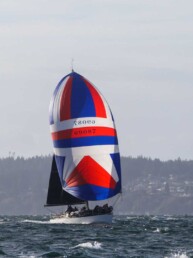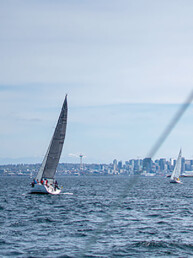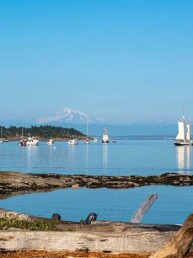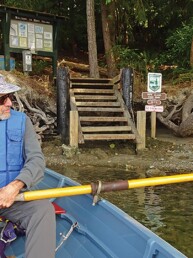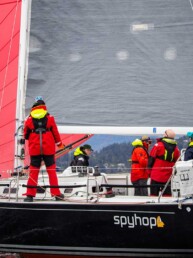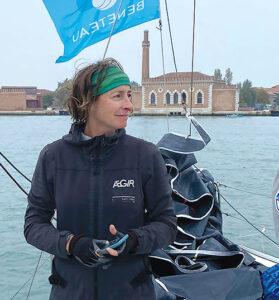 Orcas Island sailor Chris Wolfe was recently chosen as the 2023 Rolex Yachtswoman of the Year. This is generally considered the United States’ highest honor in sailing. We are extraordinarily proud and humbled to know Chris, who has frequently shared her stories with 48° North. Please join us in congratulating her!
Orcas Island sailor Chris Wolfe was recently chosen as the 2023 Rolex Yachtswoman of the Year. This is generally considered the United States’ highest honor in sailing. We are extraordinarily proud and humbled to know Chris, who has frequently shared her stories with 48° North. Please join us in congratulating her!
48° North: How does it feel to be the Rolex Yachtswoman of the Year and what has the response been like from the Pacific Northwest sailing community?
Chris Wolfe: It’s been a bit of a whirlwind, and such a huge honor! Sailors from the Pacific Northwest are the best. We really support each other and I’ve been feeling a lot of love. Friends have reached out from Canada, our North Sound groups, and the greater Seattle sailing community. I feel so lucky and very proud to be part of this community and all that we’ve done over the years. I love keeping up with the local racing, checking out the 48° North Top 25, reading about the boats, and following others’ accomplishments; and when people I’ve looked up to and learned from over the years are reaching out, it’s so special.
I feel like this award is for all of us in the Pacific Northwest. Though we’re sailing Red Ruby internationally, we wanted to bring the Pacific Northwest with us, so we named the boat after the smallest octopus in the Salish Sea.
The only other Pacific Northwesterner who has won this award is Bill Buchan in 1984. What’s it like to be in that company?
It’s really amazing. Justin and I were talking about that. 1984 was also when Carl Buchan and Jonathan McKee won their Olympic gold, so it must have been a crazy challenging evaluation for who received that award, just among Northwest sailors. But yes, over the years and now, there’s so much talent here. And I’m honored to live and sail here, and represent the PNW.
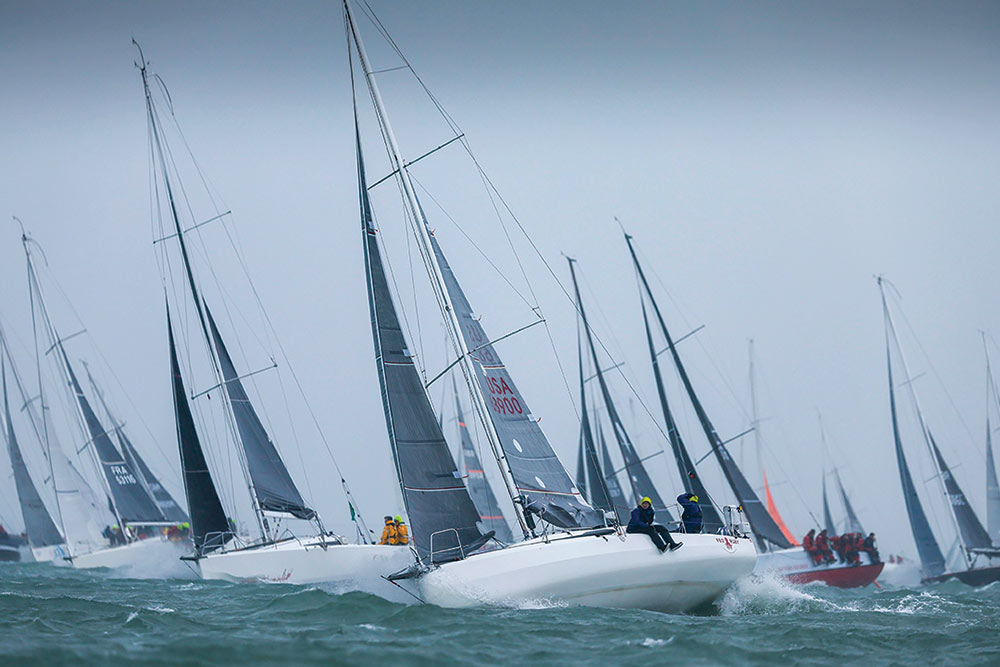
What was the ceremony like? Were you starstruck?
It was just amazing to be in that room in Savannah, an incredible honor and opportunity to talk with people who have done some remarkable things in our sport.
I was at the same table as Charlie Enright, and yes I was starstruck. Years ago, we watched the movie Morning Light. We also had the opportunity to go to the start of the 2014 Volvo Ocean Race in Alicante when Charlie was the skipper on Alvimedica. I still have the orange Alvimedica hat, it was the boat we were cheering on! Charlie is so great, super personable, it was fun to talk with him. Trying to win the Ocean Race has been such a huge effort, it’s been 10 years of his life.

Not many previous Yachtsman and Yachtswoman of the Year winners were focused on offshore sailing. Both you and Charlie Enright primarily compete offshore. What does that say about the way offshore sailing is perceived today?
I do think it’s amazing that offshore got a bit of the spotlight this year. Because most of the races that we did and Charlie did were not in the U.S., there’s been quite a lot of discussion about that.
There was quite a bit of interest a couple of years ago during Covid and when mixed offshore doubles were being evaluated to maybe become an Olympic sport. My sense is that it dropped off the radar for a while. These awards show US Sailing is still taking this seriously.
There are a lot of sailors who are interested in shorthanded offshore sailing in the U.S., but we don’t have a lot of races, nothing similar to what exists in Europe. But it sounds like there’s real interest, and there’s a lot of talk of adding shorthanded divisions to existing races.
You also sail inshore with your J/70 and other boats. How do you think about racing in the inshore environment versus offshore?
We’ve been fortunate to be able to be part of the J/Pod group with the J/70s and with Ron Rosenberg’s leadership, to develop skills with boat speed and maneuvers around the buoys. We’re taking all of that to the offshore world. During Covid, we were doing buoy races doublehanded on our J/111 and those techniques for quick boat handling translate well offshore. Efficiency with those things means you’re not tiring yourself out, which is critical offshore. Offshore is really an endurance race and energy is one of your most limited resources. Even managing it carefully, you always lose it when you’re sleep deprived at the end of a long race—on the three Hawaii races that we’ve done, we were hallucinating at the end.
Offshore, you’ve really got to be an all-arounder. Things break, and we have to deal with it, so you need to have a pretty good understanding of all of the systems. You may not be at an Olympic level at this or that element, but doing everything well enough is a really good thing offshore.
We love all of the preparation and time spent thinking about offshore events, and I think that’s translated to the inshore stuff. Race to the Straits is one of our favorite races of the year and we now think about everything for a two-day race like we would an offshore race. We can’t emphasize how important the preparation is—the boat, the rating, etc.
48° North readers have followed a lot of your sailing through your column, but please sum up your incredible 2023 season.
First and foremost, I am such a lucky person, I get to sail and do these races with my partner in life, and we have such a fantastic time. We get to enjoy the process of getting ready for the adventure, the experience itself, and then we have the memories to look back on.
In 2023, we had three main events. The first one was Van Isle 360, which we did on our J/111 Raku as the only doublehanded boat in the fleet. That was an amazing race, including some pretty gnarly downwind sailing on the west coast of Vancouver Island. When it was blowing 30 and we had the kite up, we ran into an issue while taking the kite down, wrapping a sheet around our rudder. Our rudder was completely stuck. Stuff happens offshore, and you need to have the mental fortitude to be calm and figure out how to get through it and move on. We tried deploying emergency steering. Eventually, we managed to get things free because we got broadsided by a wave, and that jostled things and allowed us to figure out the right way to free the rudder. Recovering from steering damage, and being aware of what you can do if you lose steering, is super important for any offshore sailor. In that situation, the next thing we would have done would be to deploy a bucket or a similar system, and wait until the waves and wind came down enough we could dive under the boat. But we were fortunate to have that wave help free things up.
The two big races we did on our SunFast 3300 were Fastnet and the Middle Sea Race. Fastnet was a big one, it’s the world’s biggest offshore race. There were more than 500 boats, over 100 of which were doublehanded. Thanks to some practice in the days preceding the race, we nailed the start. But it was blowing 25 and, a couple hours later, we were seeing 38 knots with wind against current, so the wave state was horrendous. I ended up cracking one of my ribs, but you can’t do anything about it, so you deal with it and go through all the ibuprofen on your boat. We ended up seeing three storm systems go through that race. It was a reminder that there’s always change going on in these long races. (Editor’s note: In the end, Chris wound up being the top finishing female skipper in the entire 500 boat fleet).
Then, in the fall, we did the Middle Sea Race, which was a completely different race. It was so much warmer, we’d never been to Malta, and we got to go by an active volcano! There were about 100 boats, but there were fewer than 10 doublehanders. When we go to these races, though, it’s always about racing all of the boats. In that race, we ended up making some really good calls and found ourselves on the leaderboard for the overall. As we were nearing the finish line, we were at the top of the leaderboard doing everything we could to gain as many meters that turn into miles. We ended up missing the overall by 24 seconds, but we put everything out there. It was an incredible experience! (Editor’s note: Chris and Justin came 2nd overall under IRC, the race’s official handicap system, but were 1st overall under ORC.)
Which of those events are you personally most proud of?
They’re all so different. I’m probably most proud of Fastnet, because it was such a grind. Toward the end of the race, I really wondered, “How is this fun?” It was so hard, you could never get dry, and I was in pain because of my rib. But we just kept going and going. I think I’m proud about that one because of the mental side.
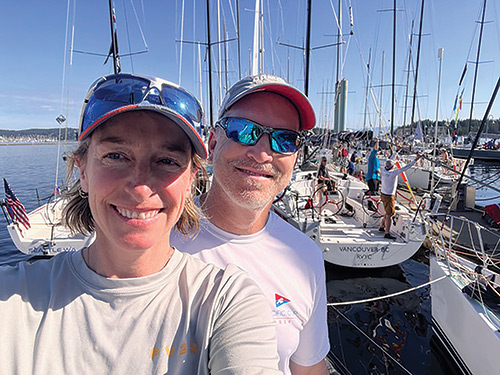
You’re an inspiration to all sailors, perhaps especially women and girls. What has been important to your development as a female sailor, and what are the best ways to empower the next generation of women and girls in sailing?
I didn’t get into sailing in the most traditional way. I wasn’t an Opti kid. The first time I was on a sailboat was on my friend’s Catalina 30 when I was 16 years old. So I came to racing from a keelboat first and then started racing at UW on FJs and 420s. Then, I met Justin and started doing a lot in sailing.
US Sailing has startling statistics when it comes to gender disparities in sailing. When kids start out they’re participating pretty much 50-50 girls and boys. As kids get older, the gender ratios skew to where women are not participating as much. I think the biggest thing is: enjoy it. Do as much as you can. Drive as much as you can. Ask questions. Be in charge. Sail with people that you really enjoy being with. That can really transform how we see this dynamic play out in the future.
Justin and I made a change years ago, I started doing most of the driving and he started doing most of the crewing, and we acquired skills that neither of us had. The first time I took the tiller on his Sonoma 30 and he went to work the foredeck, I think we put the kite in the water and ran aground at Meadow Point. Suddenly there was this empathy for what the other person was doing. Now we do everything about 50-50, but that was important for us to develop skills that we had less experience with.
I think that’s important for women and girls because a lot of people think, “Well, that’s not what I’m good at. So I’m going to focus on what I’m good at.” Identify those opportunities for improvement.
Especially after winning this award, other sailors will be clamoring for you to mentor them, but what has having Jonathan McKee as a mentor meant to you?
Both Jonathan and Ron Rosenberg, in very different ways, have been stellar mentors and coaches for the sailing I have done. We met Jonathan years ago and he has always been one of these calm, friendly sailors who’s happy to talk with anybody, but I really didn’t develop a relationship with him until he came to Italy with Justin and me for the Doublehanded Worlds. We spent 400 miles with him, getting all this time to talk with him about doublehanded racing, considerations on one design boats, and lots more.
Jonathan’s mentorship has been a lot about his approach to sailing. It is very technical and he sees things and shares them, but it’s also the leadership he shows by how he wins, how he loses, and how he handles relationships. This creates this environment where sailing is about being the best we can be as sailors and enjoying the community that we have.
Sailing is this amazing adventure, but it is something to be shared, and it’s also something that we can all improve at if we’re helping improve other people.
What should sailors who are just learning about Chris Wolfe know about you that might not be listed on your CV or mentioned among your Yachtswoman of the Year accomplishments?
The big thing that I’d like for everybody to know about me is my love for nature and interest in making sure that we’re all taking care of the environment. I used to do a lot of work with herpetology and salamanders. I once retrieved an 11-foot alligator for the state record in Oklahoma. It’s now in a museum and I had to prepare that specimen.
I’m a huge bird watcher. I keep trying to remind myself to keep more of an eye out when we’re racing, because we tend to be very focused, but if I look around I might notice, “Oh look, there’s a laysan albatross,” or “Wow, was that a blue whale?” That is an important part of the person I am, and sailing is a big part of that because it’s complementary—I can be in the environment and see these things while I’m sailing.
What advice would you share with people who aspire to sail like you do?
Start raising your hand, start offering to do whatever you can do to learn about all of the systems of the boat. You never know what opportunities might come up. Sometimes it’s like, “Does anybody know how to change an impeller?” Knowing that skill and being able to do that suddenly might set you up for opportunities in the future.
I’ll also say, and this is coming from a self-identified introvert: relationships really matter. Break out of your shell. Reach out and try to educate yourself by asking for feedback from people you’d like to do similar things to. Through those relationships you develop, even over email, suddenly opportunities may come your way. And people also remember how you treated them. Sometimes at the end of races, we need to talk to other racers about what happened out there. Try to keep that a positive thing. Remember how to hold your head up and be a good racer that people want to race with.

What’s next for you in sailing?
We’ve got a big race on the horizon in April. We’re going to do a transatlantic called the Cap-Martinique. There will be 70 other shorthanded boats, mostly French boats, which is a big deal because this is part of the sport that the French dominate. We’re the only American boat. The race begins in La Trinité, France, goes around Madeira, and then across to Martinique. It’s 4,000 miles, or essentially two Pac Cups.
Then, if we can get all the logistics together, we’re talking about doing Sydney Hobart. This is super exciting, but what’s even more exciting is that we may be doing that as a two boat team—Jonathan and Alyosha in one boat, and Justin and I in another. We could potentially be preparing for that in that manner, which would be huge to do such an epic race.
With the two-boat program, is the Red Ruby Project looking at buying another boat or chartering?
No, we would be chartering. It’s likely a huge effort to get Red Ruby down there. One of the cool things about the Red Ruby Project and this boat sharing idea, it starts to make you think about boats in a different way. We may be able to offer Red Ruby to others in exchange for using a different boat in some of these other races. And maybe it’s a lower cost alternative to having to own one boat and move it around. In a way, it’s about thinking of options and alternatives to make boats more useful for people who want to do these bucket-list races.
Joe Cline is the Managing Editor of 48° North. Congratulations to Chris Wolfe on this extraordinary honor, and our gratitude to her for sharing these stories and ideas with 48° North!
Joe Cline
Joe Cline has been the Managing Editor of 48° North since 2014. From his career to his volunteer leadership in the marine industry, from racing sailboats large and small to his discovery of Pacific Northwest cruising —Joe is as sail-smitten as they come. Joe and his wife, Kaylin, welcomed a baby girl to their family in December 2021, and he is enjoying fatherhood while still finding time to sail, make music, and tip back a tasty IPA every now and again.
